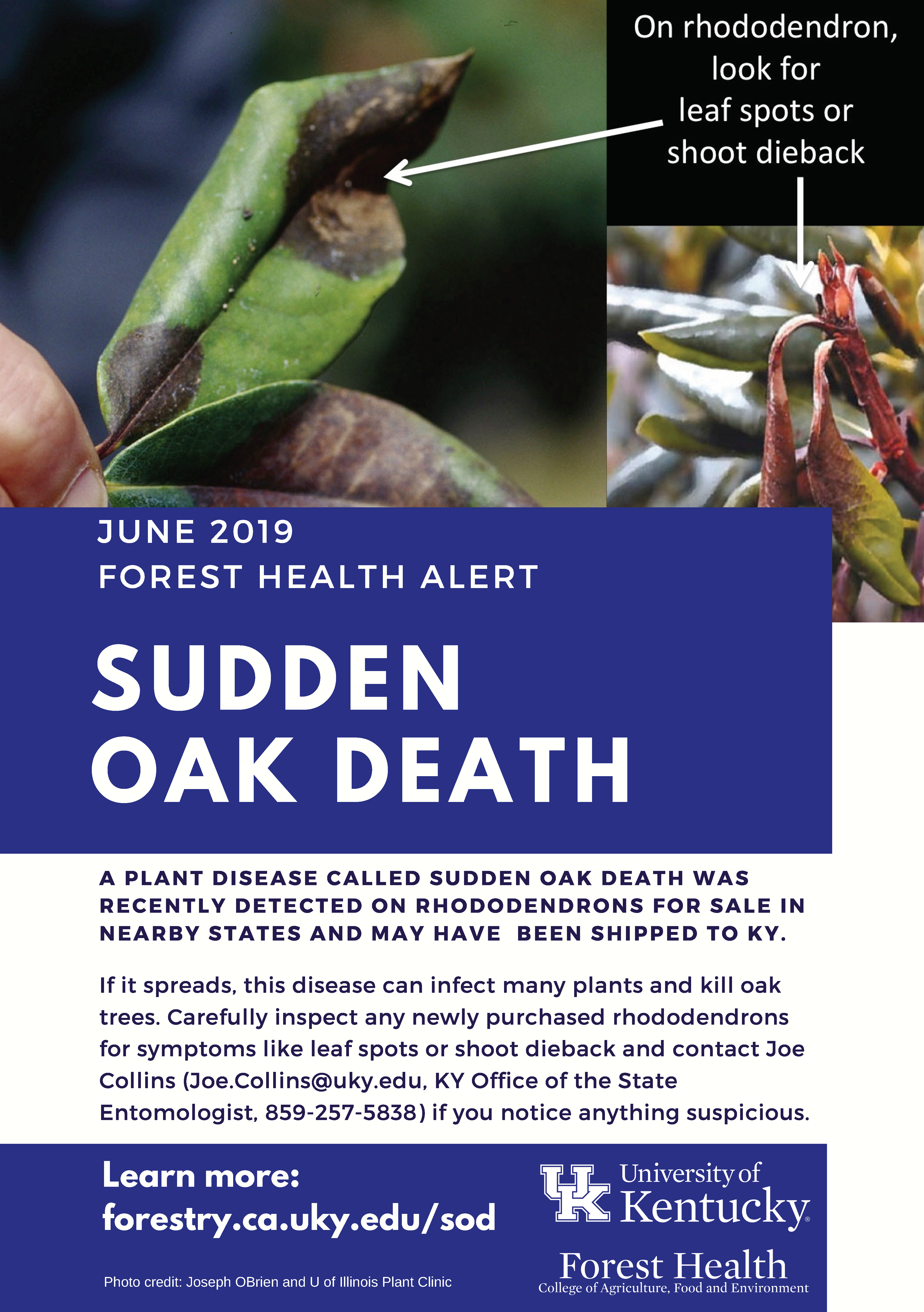Sudden Oak Death
Since the mid-1990s, millions of tanoaks and oak species have killed by the disease Sudden Oak Death (SOD). Although the origin of the pathogen that causes SOD remains unknown, it is considered invasive to North America and infects a wide variety of plant species. While only lethal to a small number of these plants, SOD has proven hard to control or eradicate. In the landscape, SOD is currently restricted to the west coast but there is ample suitable habitat and susceptible tree species in the Appalachian Mountain area, including parts of Kentucky. If SOD were to establish in these forests we believe it could be extremely destructive, particularly to red oak species
What is it?
The pathogen that causes SOD, Phytophthora ramorum, is in a group called the oomycetes or “water-molds.” While similar to fungi in many ways, they are evolutionary very different and have some key biological differences that affect its spread and management. Water-molds like cool moist conditions and produce swimming infectious spores that can find and infect susceptible plant tissue.
In addition, SOD produces a different type of long-term resting spore that waits dormant in soil or plant material for the right conditions for the pathogen to grow. Because SOD is not a fungus, the chemical approaches used for fungi are ineffective and there are currently no chemical treatment options for infected trees.
What does it do?
One of the most challenging things about SOD management is that the pathogen infects hundreds of different plant species and does very different things on different hosts. On the majority of plant hosts, SOD causes minor foliar lesions or shoot die-back that are lethal to the plant. However, on some tree species, especially oaks, tanoaks and tamaracks, SOD cause trunk and branch cankers that can be deadly. SOD grows in the vascular system of these species and eventually girdles and kills trees.
To make matters more confusing, foliar hosts actually drive SOD epidemics. On some foliar hosts SOD produces abundant infectious spores, despite the fact that symptoms may be minimal or non-existent. Meanwhile, other lethally affected hosts, such as coast live oak, are dead end hosts on which SOD cannot produce infectious spores.


